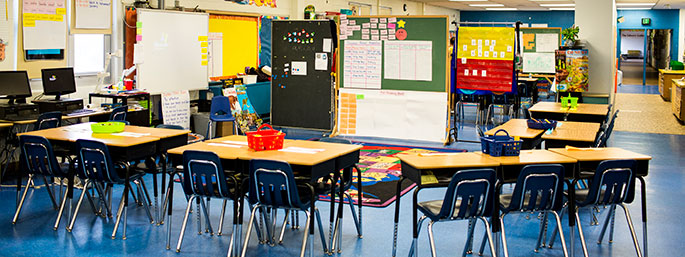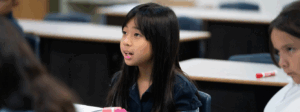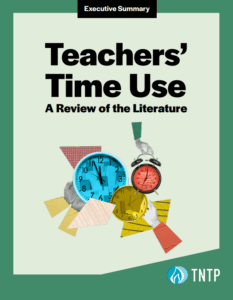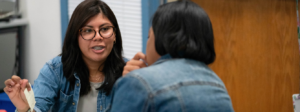I grew up here in Atlanta, where I graduated from Cedar Grove High School in DeKalb County—a struggling school in a high-poverty community which I now support as part of my work on teacher training and development at Georgia Teaching Fellows. My dream has always been to give back to students what so many teachers unselfishly gave to me … HOPE! Through GTF, that dream has come to fruition.
The other week, I visited my alma mater and took note as a Fellow disciplined a student for talking and not paying attention during class. She addressed his behavior by putting him out of the classroom and having him wait in the hallway while she wrote a referral to the principal’s office.
I was glad she addressed the off-task behavior. But I couldn’t help wondering: Did he really have to miss out on instructional time? What would happen in the principal’s office? Was the Fellow choosing her battles wisely?
My thoughts immediately turned to disturbing new research about school suspensions. A single referral to the principal’s office seems like a small matter, but just one suspension is associated with a 32 percent increased chance of dropping out of high school. And overwhelmingly, like the young man I saw sent to the principal’s office that day, the students suspended most often are African American. African American students make up 15 percent of all students, but are 35 percent of those suspended once, 44 percent of those suspended twice and 36 percent of those expelled.
In my earlier role as a classroom teacher, I taught thousands of Atlanta students, all in Title I schools with African American and Hispanic student populations. During all that time, I never wrote up a student or sent one to the office. I would often reinforce positive behavior by reminding students of my high expectations for them, which created an environment of rising to the occasion. I also built relationships with other adults in their lives, such as coaches and mentors, and referenced those as we discussed expectations and behavior. And I used non-invasive techniques like “100 percent” from Teach Like a Champion to keep behavior on track during class.
But many teachers, and especially brand-new teachers like our Fellows, are not yet able to create this sort of environment. It’s clear that most training programs do not adequately prepare new teachers for the challenges of classroom management, an issue our programs have worked hard to correct. But there are other factors at work, as well—factors I’m glad to see the federal Department of Education address in its recent new guidance for student discipline.
It’s heartening that U.S. Secretary of Education Arne Duncan is initiating a conversation and potentially inspiring real change on this issue. But looking at the guidance, it’s hard not to feel frustrated. The department isn’t putting itself in an activist role but simply highlighting schools’ standing obligations under federal law to “administer student discipline without discriminating on the basis of race, color, or national origin.”
This is urgent for me, both as a trainer of teachers and as the mother of two, including an African American young man who will enter adolescence all too soon. While discipline is surely needed in some situations, the trends are undeniable: Students of color are far more likely to be removed from class for behavior than their white classmates, and that trend grows sharper when you factor learning disabilities or English-language acquisition into the equation.
Sometimes, when you encounter these sorts of statistics, it’s hard to know the way forward. I quickly settled on two. First, I thought about the implications this could potentially have on my son, and how I could protect him from these disparities. The guidelines may be fairly written, but will they be fairly applied? I know one thing for sure: I will continue to help him be the responsible person he is—the sort of person who does the right thing (even when no one is looking), simply because it’s the right thing to do. As Dr. King said, I want him to be judged not by the color of his skin, but by the content of his character.
Then, in my work as an educator and advocate, I will ensure our teachers and leaders are properly trained to administer student discipline in a nondiscriminatory manner. Our training is explicit about identifying the right skills to create peaceful and productive classroom environments—but there are other strategies teachers could explore, including established approaches like Restorative Practices and Second Step. As a classroom teacher, I would often have students complete attitude and interest surveys each semester to help me find ways to connect the curriculum to the world around them. But the more I think about the guidelines, the more I realize that we adults have a long way to go. Is the real issue school discipline or is it our ability to build real relationships with our students in which they know and trust us because we know and care about them? It’s something I’m thinking about—a lot.
Change starts with conversation—and it’s so important that we’re talking about this now. I feel deeply invested and empowered by this conversation. But I don’t yet feel accomplished. When the new guidance is so widely applied it barely needs repeating, when students are rarely, and fairly, removed from class for their behavior, then we’ll know we are on track to arrive at the right place.








